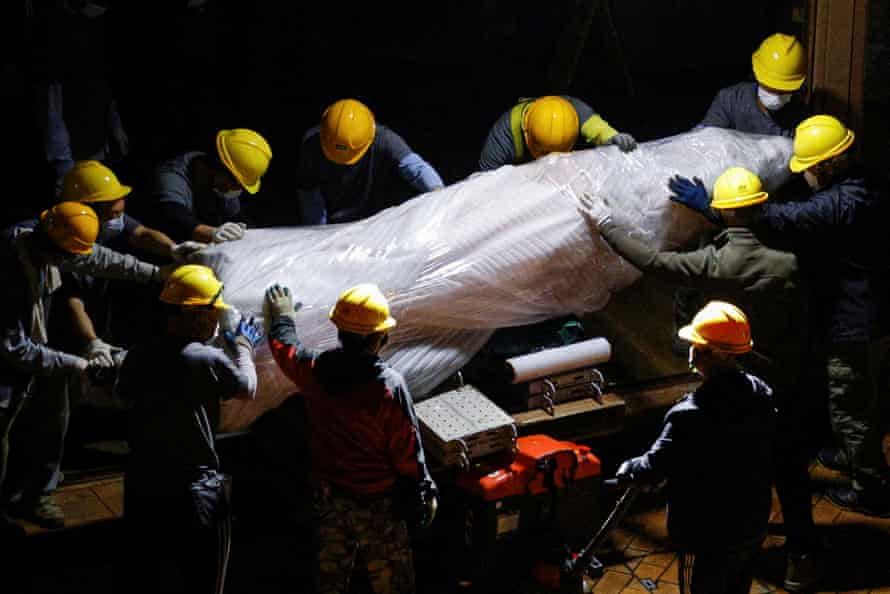‘Atmosphere of fear’: Hong Kong students lament loss of Tiananmen statues | Hong
Sophie Mak, a recent graduate of law and literature, had walked past the fiery orange monument between classes for five years. A month after her graduation ceremony at the University of Hong Kong (HKU), two nights before Christmas, workers erected barricades around the statue. Under the cover of darkness, they cut it down.
“It’s an absolute disgrace that HKU removed the Pillar of Shame so callously and so furtively,” Mak says.
The pillar, a statue of bodies twisting towards the sky commemorating the victims of Beijing’s bloody 1989 crackdown on protesters in Tiananmen Square, had been a part of the campus for over two decades. Many saw it as a symbol of Hong Kong’s wider political freedoms – in contrast with mainland China, where the killings have been erased from public memory and remain taboo. Students were seen crying at the empty site on Christmas Eve.
“Now that it’s gone, it’s incredibly hard to distinguish HKU from other universities in the mainland,” a third-year student who wished to remain anonymous said. “As a student it’s heartbreaking. A key piece of what made HKU so iconic is gone.”
The same erasure happened within days at other campuses across the city. By Christmas, the Chinese University of Hong Kong (CUHK) had removed a Goddess of Democracy statue from the entrance of its train station, and Lingnan University had stripped a Tiananmen massacre wall relief from its campus. A fourth university has requested its student union remove a statue.
The universities cited safety and unspecified legal risks in response to press inquiries. HKU and CUHK maintained that the statues had never been authorised. Both had nonetheless stood on the campuses for over a decade.
The universities’ swift removal of the Tiananmen massacre memorials, done in the dead of night without consulting students, now symbolises the freedoms the city has lost, observers say.
“That an educational institution should remove a statue in the dead of night under such conditions … [underlines] the dramatic deterioration in the freedom of academic thought and expression in today’s Hong Kong,” Louisa Lim, author of the The People’s Republic of Amnesia, tells the Guardian following the removal.

Silence on campus
The erasure of symbols of the massacre is the latest manifestation of a climate of uncertainty and self-censorship that has been growing on the city’s campuses in the past 18 months, academics and students say.
There have been few public signs of protest against the removals from either students or staff, who are on semester break.
The silence is also telling of the state of debate on campus. “You can feel that there is no longer serious academic discussion about the situation. It’s pure bureaucracy,” Harry Wu, a former professor of medical humanities at HKU, says.
Beijing imposed a national security law on Hong Kong last year in response to months of pro-democracy protests, which were widely supported by university students. Authorities largely blamed the unrest on student-aged protesters and unverified claims of…
Read More: ‘Atmosphere of fear’: Hong Kong students lament loss of Tiananmen statues | Hong
